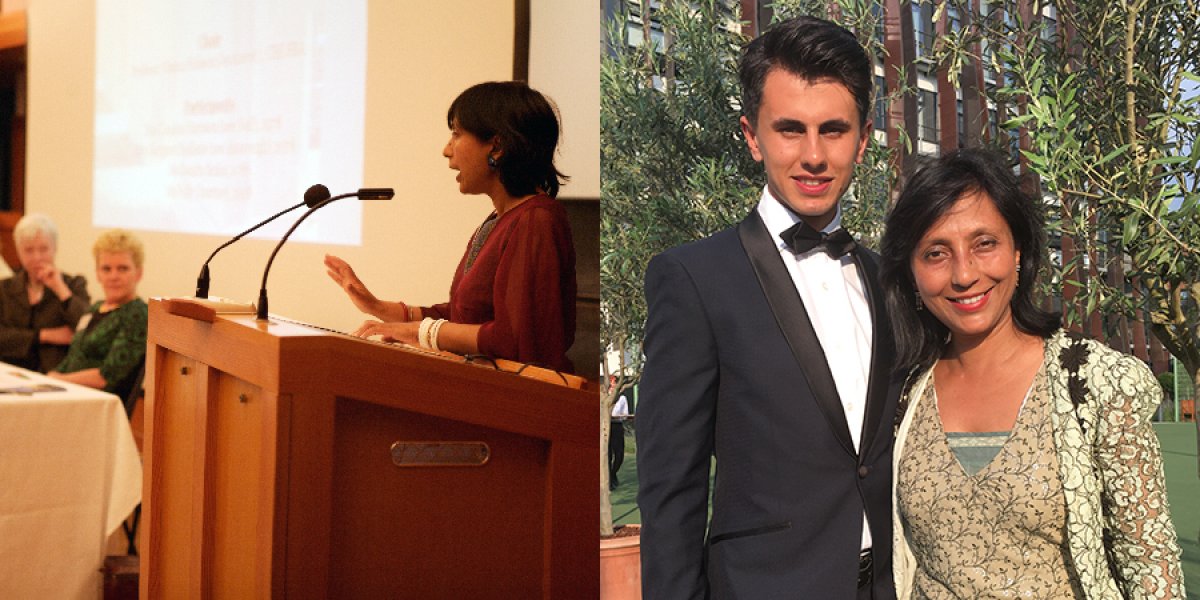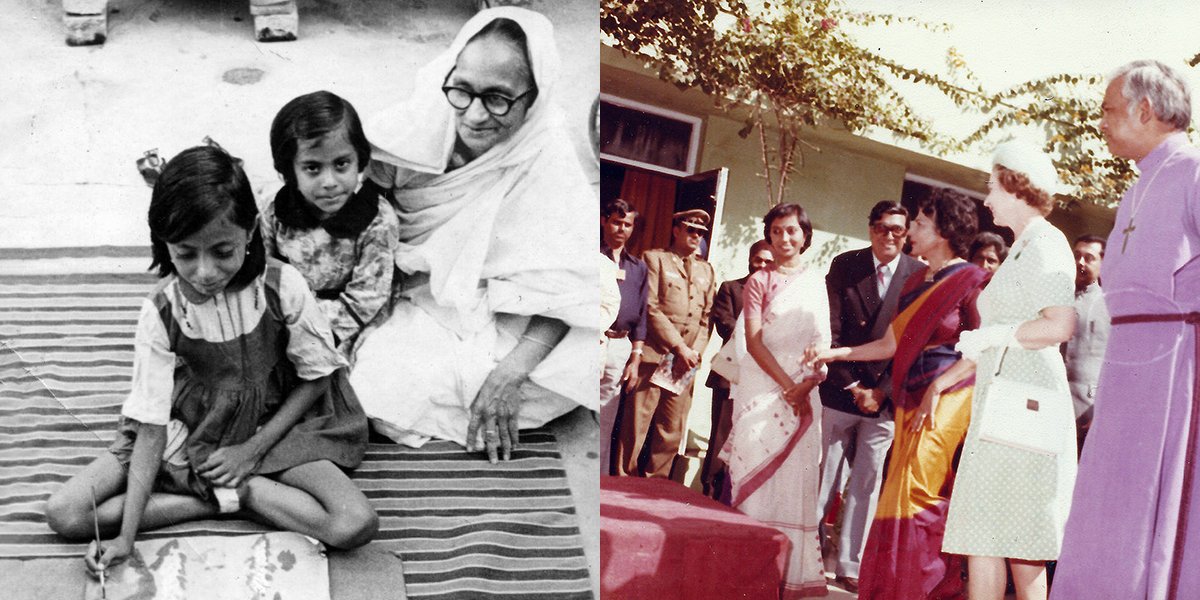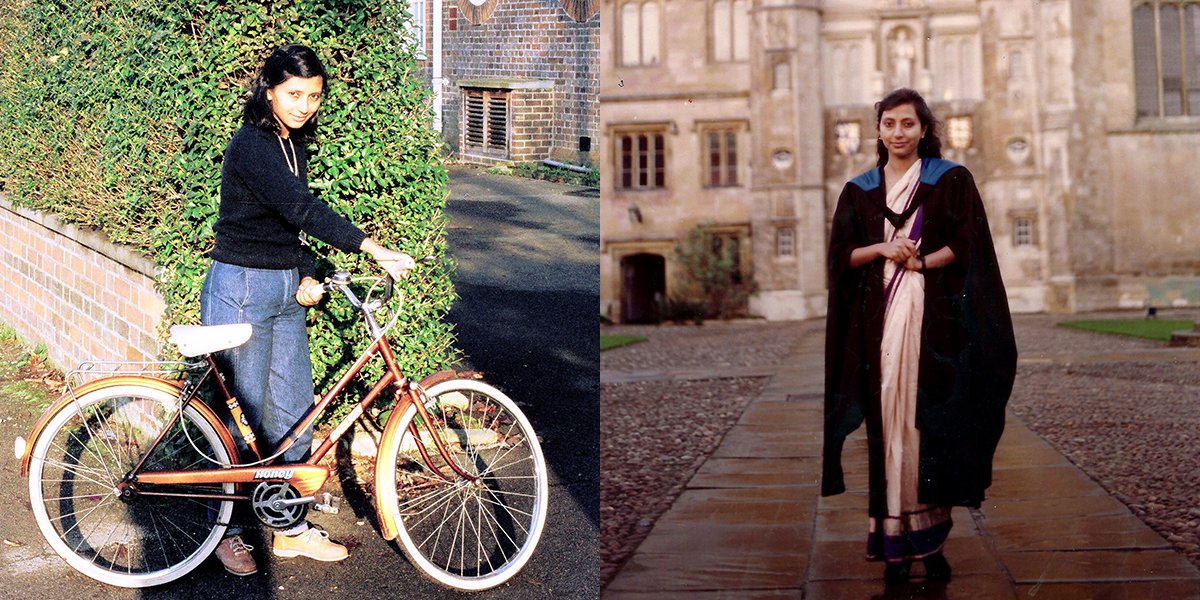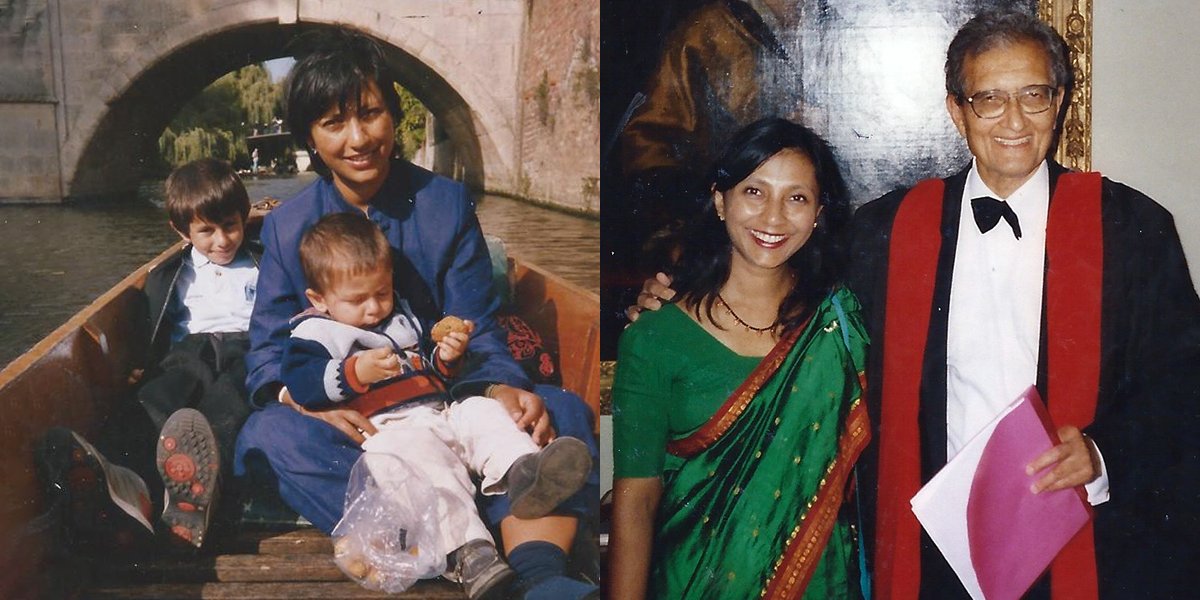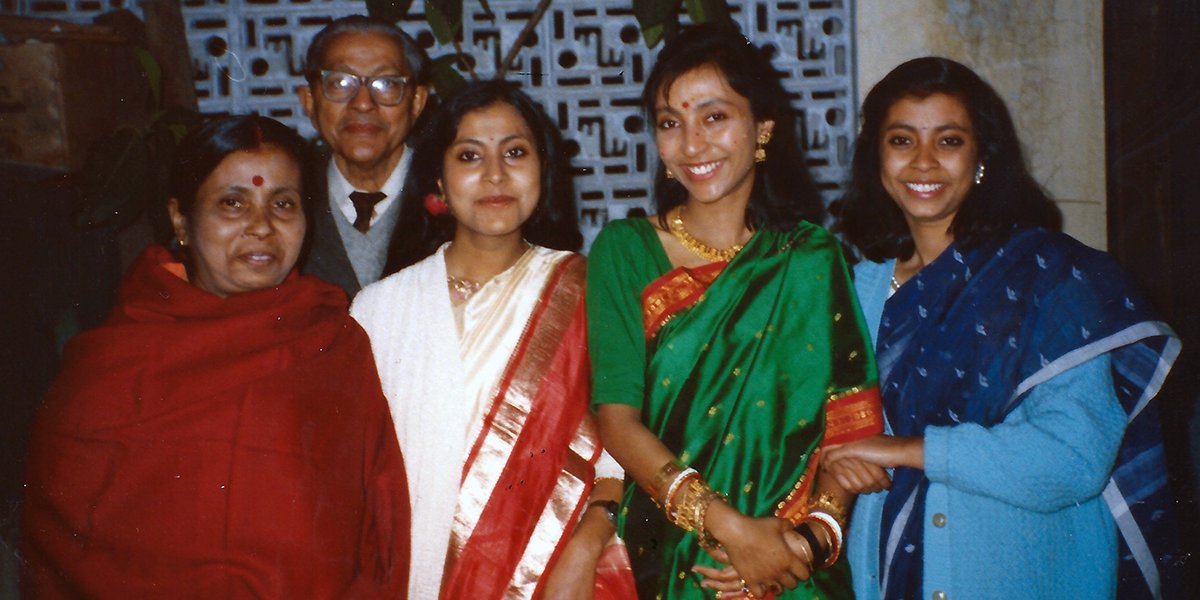Bringing India to Cambridge - Sumita Singha
Sumita Singha (Trinity 1988) describes coming to the UK to study at Cambridge in the 80s, including being the first woman to wear a sari for graduation.
Being at Cambridge was an immense privilege- it has given me the courage to dream, the ambition to succeed and ability to help others.
Sumita Singha
‘You should apply for this’, said my friend, looking at the notice board of the Delhi School of Planning and Architecture.
I had just received many prizes at graduation, including the Gold medal for academic achievements and he felt confident that I could get the UK’s Overseas Development Association Student Scholarship. Despite stiff competition, I was very pleased to be selected to study for the MPhil in the newly established course in Environmental Design at Cambridge University, and in the process became the first woman to do so. I had felt a special affinity with the UK when a ceramic mural designed by me for my school was inaugurated by Her Majesty, Queen Elizabeth II, during her visit to India in 1983, but I had never imagined I’d one day study there, let alone at Cambridge.
Cambridge is a very international and friendly place. From the time I entered my digs at Grange Road and was welcomed with crumpets and jam by my housemate, I made many friends from all quarters of the globe. In particular, my little group of Buddhists, made me feel very welcome. In the days before globalisation and the internet, I had little idea about life in the UK, so my new friends enlightened me about British life and institutions such as the NHS, NatWest, Robert Sayle (John Lewis), and Sainsbury’s.
The powers of education and invention
I come from a poor family. All five of us (my parents and three daughters) lived in one room with a leaking roof, in a busy commercial area of New Delhi. At one point, I even slept on the table that was also used for my studies and for eating on. My father was a renowned maths teacher who believed in the power of education, so he enrolled his daughters in the best school in the area. Eschewing better paid work, my father cycled to work in all weathers, and taught poor students in a government school. My mother was the ‘wonder economist’ of the family who managed to make it all work, buying from the government run ‘ration shops’ and pavement vegetable stalls.
Our small flat was on the first floor of a house owned by my mother’s sister and her husband. My uncle and aunt did not have children and with my father being so busy, my uncle supervised our homework and entertainment. He took us to art and gardening shows and involved us in the weekend maintenance of his prized Morris Minor, a star performer at the Delhi Vintage Car Rally. My uncle was a scientist and we had a lot of fun at weekends, painting or making unusual things like a cinema screen made from a sari, a basket on a pulley which delivered food between the two floors of the house, and homemade furniture. Just before I left for Cambridge, we bought our first TV and fridge, but I had not seen a computer when I arrived.
I managed to get scholarships through school and university and worked at various jobs from the age of 17 to help with household expenses. My reading and painting supplies were replenished annually by winning competitions for which my parents enthusiastically ferried us on buses or on foot. Our clothes were either home stitched from scraps of material by my mother or bought second hand - I brought some of these to Cambridge, but thankfully I also had a winter clothing allowance! However, I was severely malnourished with a history of serious illnesses.
Bringing India to Cambridge
My lectures were held at the Martin Centre, near Grantchester, which was a long walk, with some fierce looking cows to contend with along the way. Occasionally I also slept on a sofa there if it got too late. So, I saved up to buy a girl’s bike for the princely sum of £10, naming it ‘Honey’. I learnt to cycle by practicing in the empty Chaucer Road car park in the evenings. My academic tutor, Dr Nick Baker recalls, ‘Some days after you ventured out onto the roads, I asked you how you were getting on and you replied, “Very well, thank you, but I find that I am drawn to walls” which alarmed me!’ I also learnt to swim at Cambridge - something we couldn’t afford in Delhi.
My personal tutor, the late Dr Martin Cowley, looked rather severe, but had a heart of gold. As I used to walk up the winding stairs to see him, I felt that no matter how complicated the problem, he would find a solution. He encouraged me to apply for a grant which enabled me to travel to the USA for research and helped me in many ways. I was also getting to grips with the fun side of British culture - with the BBC’s Blackadder, croquet, pubs, doner kebab shops, various types of curry spices that were unheard of in India, high table dining, and ‘bringing a bottle’ (I brought a well washed jam jar to my first party!)
I also brought India to Cambridge in my own way, by becoming the first woman to wear a sari for my graduation after getting special permission from the Master, Andrew Huxley. During my year at Cambridge my health improved, and I managed to gain weight, and so finally the MA gown did not overwhelm me at the graduation ceremony.
Learning from Cambridge
After leaving Cambridge, I married an English photographer and set up an architectural practice, Ecologic, specialising in sustainable design, in London. I have two children, Chater and Catchik, and Chater is now studying History of Art at Cambridge. My two younger sisters studied in India and both have PhDs - Nuclear Physics and Biochemistry. My father, uncle and aunt have sadly passed away, but our home pulley system is still being used and, by strange coincidence, I live in the converted Morris Minor factory in London. I still wear second hand clothes and live modestly!
Environmental concerns and social equality are very much in the limelight now and besides my architectural work, I have also set up an environmental design charity, Charushila (the word means ‘beautiful foundations’ and also is the name of my paternal grandmother who died in our village in Bengal without medical care). Charushila has worked on community projects in the UK, and in places of conflict and scarce resources abroad.
Promoting women’s rights and equality in the workplace has been another ongoing passion. I established the equality forum at the Royal Institute of British Architects (RIBA), Architects for Change, after I became the Chair of Women in Architecture in 1999. I received the Atkins Inspire and Women in Business awards for this initiative and was invited back to Trinity College in 2008 to speak at the 30th anniversary of the admittance of female students.
I have now published three books on architecture (and also a novel), taught at several universities in the UK and abroad, and made media appearances. Presently, I sit on the RIBA professional standards panel and its Ethics and Sustainable Development commission. My passion for healthcare design was ignited after time spent in hospitals following five miscarriages and a stroke in 2009 from a clotting disorder. Four years later, I became a non-executive Director of Moorfields Eye Hospital NHS Foundation Trust in 2013 and am currently writing a book on healthcare design. I am a member of the Sustainable Development Unit at NHS England. I am also a trustee of the Architects Benevolent Society.
My mother told me that if I should ever find myself in a position of privilege that I should strive to help others. Being at Cambridge was an immense privilege - it has given me the courage to dream, the ambition to succeed and ability to help others.
UPDATE: Sumita received an OBE for services to architecture in 2021.
Sumita Singha (originally Sinha) has an MPhil in Environmental Design in Architecture and attended Trinity College. This article has been written by Sumita Singha and the opinions expressed are those of the author.
